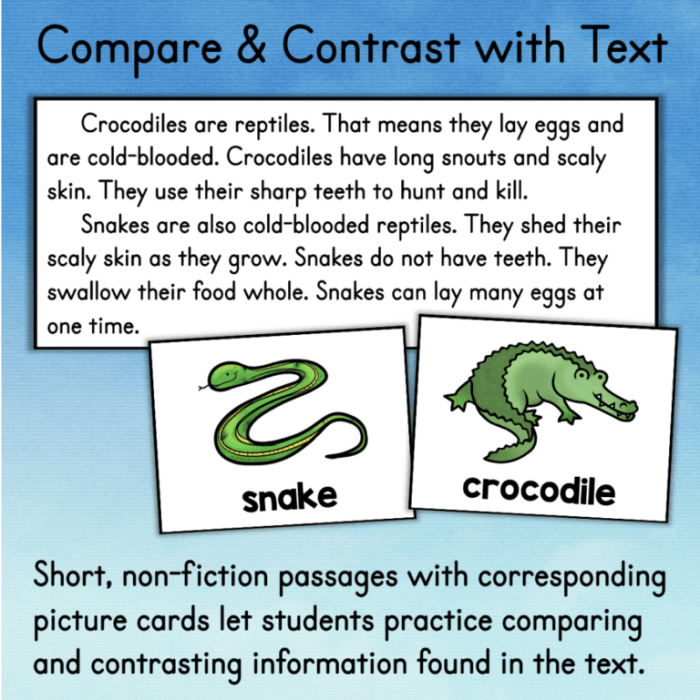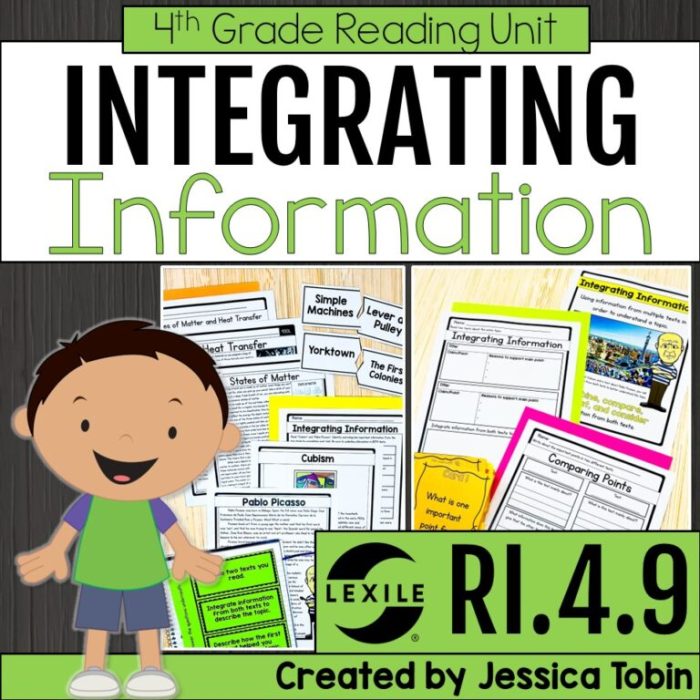Compare and contrast nonfiction passages – Comparing and contrasting nonfiction passages is a crucial approach to critically analyzing texts, allowing readers to delve into the similarities and differences between written works to gain a deeper understanding of their content and significance.
This comprehensive guide will explore the essential steps involved in comparing and contrasting nonfiction passages, including identifying similarities and differences, analyzing structure and organization, examining language and style, evaluating arguments and evidence, and drawing insightful conclusions.
Topic Introduction: Compare And Contrast Nonfiction Passages

Comparing and contrasting nonfiction passages involves analyzing two or more texts to identify their similarities and differences. This approach helps readers understand the perspectives, arguments, and evidence presented in the passages, and to draw meaningful conclusions.
Benefits of comparing and contrasting nonfiction passages include:
- Enhanced understanding of the texts’ main ideas and arguments
- Identification of different viewpoints and perspectives
- Development of critical thinking and analytical skills
- Improved ability to evaluate the credibility and reliability of sources
Identifying Similarities and Differences, Compare and contrast nonfiction passages
To identify similarities and differences between passages, follow these steps:
- Read the passages carefully, paying attention to their main ideas, arguments, and supporting evidence.
- Create a Venn diagram or table to organize your findings.
- Place the similarities in the overlapping section of the diagram or in a separate column in the table.
- Place the differences in the non-overlapping sections of the diagram or in separate columns in the table.
Analyzing Structure and Organization
Compare and contrast the structures of the passages, including introductions, body paragraphs, and conclusions. Consider the following elements:
- Organization of ideas
- Use of headings and subheadings
- Progression of arguments
- Use of transitions
Analyze how the organization of the passages contributes to their overall meaning and impact.
Examining Language and Style
Analyze the language used in each passage, including vocabulary, tone, and sentence structure. Consider the following elements:
- Choice of words
- Use of figurative language
- Sentence length and complexity
- Overall tone and mood
Discuss how language choices shape the reader’s understanding of the content.
Evaluating Arguments and Evidence
Identify the arguments presented in each passage and compare their strengths and weaknesses. Consider the following elements:
- Main claims and supporting evidence
- Validity and reliability of sources
- Logical fallacies
- Counterarguments
Evaluate the evidence used to support these arguments, considering its relevance and reliability.
Drawing Conclusions
Summarize the key findings of the comparison and contrast. Discuss the implications of these findings for understanding the texts and their broader contexts. Consider the following elements:
- Similarities and differences between the passages
- Strengths and weaknesses of the arguments
- Implications for understanding the topic
- Future research directions
Clarifying Questions
What is the purpose of comparing and contrasting nonfiction passages?
Comparing and contrasting nonfiction passages helps identify similarities and differences in content, structure, language, and argumentation, leading to a deeper understanding of the texts and their respective perspectives.
How can I effectively compare and contrast nonfiction passages?
Follow a systematic approach: identify similarities and differences, analyze structure and organization, examine language and style, evaluate arguments and evidence, and draw well-supported conclusions.
What are the benefits of comparing and contrasting nonfiction passages?
Enhances critical thinking, improves analytical skills, fosters a deeper understanding of texts, develops an appreciation for diverse perspectives, and strengthens argumentation abilities.

